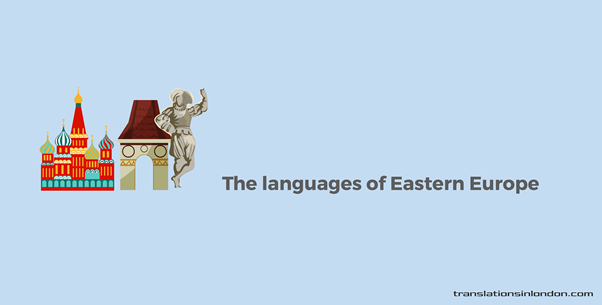
Eastern Europe, notwithstanding its turbulent history, has become a symbol of economic growth and prosperity in recent times.
Although what nations make up the region remains a subject for debate among the international community, the region, asides from its booming population, continue to play a strategic role in global affairs. And hence must be a prime consideration for brands with global expansion in their workbooks.
In this language of the month post, we would be delving deeper into the languages spoken in Eastern Europe and the need to cater to the diversity of this demographic.
The nations in Eastern Europe
Historians and other stakeholders are often at sixes and sevens about the nations that constitute Eastern Europe. And the response you get on this issue depends on a range of factors like context and even politics.
But according to the United Nations, Eastern Europe is made up of 10 sovereign nations (Bulgaria, Czech Republic, Hungary, Poland, Romania, Russian Federation, Slovakia, Republics of Belarus, Moldova, and Ukraine), which is quite similar to the nations that make up the former Eastern bloc (only with the exclusion of the Democratic Republic of Germany)
Other sources, however, harp on the inclusion of countries from other parts of Europe, asides from the nations mentioned earlier.
What languages are spoken in Eastern Europe?
There are a number of languages prevalent in Eastern Europe, most of which have Slavic origins. But these languages almost vary from nation to nation even though there may be slight similarities amongst them. The most spoken languages in Eastern Europe are;
Russian: Russian is the language with the highest number of speakers in Eastern Europe and the seventh most spoken language worldwide with its over 260 million speakers.
Russian is an East Slavic language that has undergone several modifications with time. In the past, Russian adopted the standardized Old Church Slavonic format, but as time went by was also influenced by Turkish, French, Dutch, and German.
Russian is a strategic language in Eastern Europe and the continent, with four nations adopting it as an official language. And although the vast amount of its speakers are domiciled in Russia, it is common to find other Russian speakers across Europe.
Ukrainian: Is an East-Slavic language that shares similar origins with Russian and Belorussian but has undergone significant transformations with time.
While Ukrainian speakers can understand Russian, the language lacks most of the elements of Old Church Slavonic present in the Russian language. Instead, Ukrainian in recent times developed attributes of Polish which was once the official language of the region.
Ukrainian alphabets also bear striking similarities to other East Slavic alphabets who all take the Cyrillic form common in Eastern Europe. The language has 33 letters with 20 consonants, ten vowels, two soft vowels, and a soft sign.
Polish: is yet another prominent Slavic language with Indo-European roots in Eastern Europe, and it has over 50 million native speakers globally.
Christianity and subsequently Roman catholicism paved the way for the impact of Latin in Polish in earlier times. More recently, other languages like German have left a notable mark on the language due to political Influences.
Polish has 32 alphabets and seven diagraphs and is common to find very long words and hard-to-pronounce words due to its unique lexicon.
You can read more interesting facts about Polish here
Hungarian: is an agglutinative language and one of the few languages in Eastern Europe that does not have Indo-European origins. Instead, it comes from the Euralic family.
Due to the alliance between the Hungarians of past times with Turkish tribes and the Ottoman empire, the language has its foundations built on Turkish with other influences from Latin, German, Slovak, and Bulgarian.
And while the bulk of Hungarian speakers are native to Hungary, it is quite common to find Hungarian spoken in other parts of Eastern Europe due to a treaty signed after the first world war.
Bulgarian: Bulgarian is another Slavic language from the Indo-European family primarily spoken by the people of Bulgaria. The language is closely related to Macedonian, and its wordings use Cyrillic alphabets, which bear a striking resemblance to Russian characters to anyone who is not very familiar with both languages.
Bulgarian has 30 alphabets (24 consonants and six vowels) and is also one of those languages with long words and tongue twisters.
Belarusian: Is an old West Slavic language whose origins date back to several hundred years ago. Belarusian is quite similar to both Russian and Ukrainian, so much that Belarusian alongside Russian are the official languages of Belarus. There are over 8 million speakers of Belarusian spread across the world.
Slovak: With just over 8 million speakers, Slovak is one of the lesser spoken languages in Eastern Europe and is a lot similar to Czech due to political proximity in the past.
It belongs to the West Slavic group and has unique lexicons characterized by its excessive presence of consonants. Slovak language has the largest number of alphabets (46) amongst all the European languages and also contains a lot of diacritics making them difficult to pronounce by the average person.
Czech: The language formerly known as Bohemian bears its roots from the Indo-European family. And it is associated with the people of the Czech Republic and Slovakia as both nations were once one sovereign state.
Along with most other Eastern European languages, Latin also had an impact on Czech in earlier times, but more recently, Czech had absorbed elements of Polish, German, and even Russian into its vocabulary.

Photo by Thewonderalice on Unsplash
Romanian: Romanian is a Romance language similar to Italian, Spanish, French, etc., but has undergone some significant Slavic influence over time. Romanian has over 30 million speakers across Europe, and asides from being the official language of Romania also doubles as the official language of Moldova. (In fact, the language is also termed as Moldovan in some regions)
Moldovan: is basically another name for Romanian prominently recognised amongst people from Moldova.
Conclusion
One thing that you may have noticed from this post is that despite the bulk of languages spoken in Eastern Europe having similar origins, they also have significant and subtle differences.
Therefore, brands must acknowledge and understand these differences when entering this region, otherwise, it may have dire effects.
For that reason, global brands should engage the services of professional language service providers who deliver the best in translation and localization in order to fulfill their business goals.

